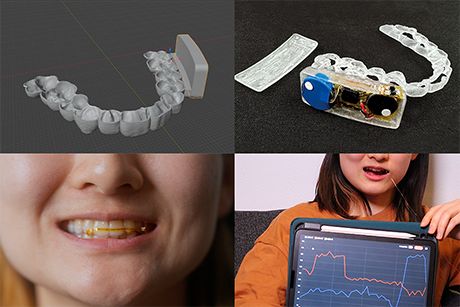Faculty Research: Professor John Lienhard
Efficiency Innovation for Water Purification
 |
| From left to right: Karim Chehayeb, Gregory Thiel, Steven Lam, Prakash Narayan Govindan, Max St. John, Ronan McGovern,and Professor John Lienhard. |
| Photo Credit: David Castro-Olmedo/MIT |
by Alissa Mallinson
If you live in a First World country, you probably do not worry about safe drinking water for you and your family. But according to Professor John H. Lienhard V, the Samuel C. Collins Professor of Mechanical Engineering, you should.
“The world supply of renewable fresh water is fixed by the natural cycle of precipitation and evaporation in the atmosphere,” he says. “That supply doesn’t grow with the population, so as the world population increases, it’s got to be spread among more people. In areas of the world that are more Westernized, the intensity of water usage tends to go up, creating additional demand. The increasing water scarcity worldwide is a much bigger issue than most Americans are aware of.”
Lienhard directs a collaboration with King Fahd University of Petroleum and Minerals (KFUPM) and leads the Center for Clean Water and Clean Energy at MIT; he also spearheaded a one-of-a-kind course in desalination as part of the Department of Mechanical Engineering curriculum. He has dedicated the past six years of his career to addressing this worldwide water problem through education and research.
“Most big cities are coastal,” he says, “and are sitting next to a lot of undrinkable water. We’re looking to take a fixed supply of renewable fresh water and expand it by converting undrinkable water to usable water.”
To do this, Lienhard and his team of graduate students and post-docs, including his former post-doc Prakash Narayan, utilize the tools and principles of thermodynamics – such as energy recovery and minimization of entropy generation – to identify the most energy-efficient water purification processes. The group’s major focus is a technique called humidification dehumidification (HDH) desalination, an engineered version of the natural rain cycle in which brackish water is heated, evaporated, cooled, and condensed, leaving only purified water at the end of cycle. They have conducted many years of efficiency testing to get to their current level of understanding of the HDH cycle and all the engineering variables that can make it more or less efficient.
“We’ve asked and answered many questions about efficiency over the past few years,” says Lienhard, “such as whether to heat the water or the air, whether to use a closed loop water system or a closed loop air system or both, whether to extract some of the air from the humidifier and inject it into the dehumidifier to achieve better performance.” They have also looked at several potential components, such as solar air heaters.
All these years of testing have led them to a very promising solution, one that optimizes the dehumidification component to arrive at the most efficient system.
“The dehumidifier is one of the most awkward components of the HDH system from an engineering perspective,” says Lienhard. “It has moist air on one side and a liquid coolant on the other. But moist air doesn’t transfer heat and moisture efficiently, so you need a lot of surface area, which adds unwanted weight and cost.”
Lienhard’s group has developed an innovative solution to this cumbersome problem: a bubbler in place of the classic fin-tube design. It is a multi-stage design that eliminates all the metal fins and surface area, replacing them with freshly formed bubbles that do not have as much resistance to heat and mass transfer as steady evaporation on a plate. It works by bubbling moist air into cold water so that the moisture condenses into the cold water.
“The solution we chose is simple, robust, and inexpensive. And because of its simplicity, it will be ideal for deployment in situations where you don’t have an engineer on site to keep an eye on the system,” says Lienhard.
This technology is intended for use in developing countries where potable water is not easy to come by, but there are also applications in the oil and gas industry involving hypersaline water. Since desalination costs for this technology are the same regardless of the level of salinity, the Lienhard team’s highly efficient desalination device is in an ideal position to lead the pack.
“It wasn’t the first problem we were working on,” says Lienhard, “but we think this technology will work very well in remediating water produced during natural gas extraction by hydraulic fracturing. This water is being pulled through ground formations and, as a result, picks up very high levels of dissolved salts and can be up to five times more saline than seawater.”
Lienhard and Narayan, along with their coworkers, have patented their technology; Narayan and other former students have recently formed a company and will begin manufacturing HDH systems this year. The group recently won the Water Technology Idol of the Year Award for their innovation.
For more information, watch a video at http://ilp.mit.edu.ezproxy.canberra.edu.au/videodetail.jsp?id=692


